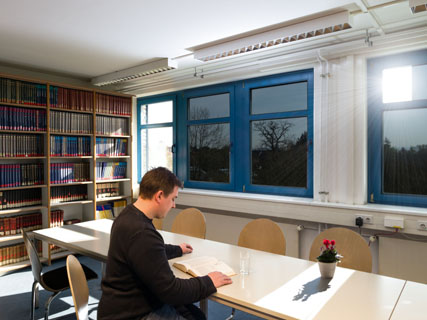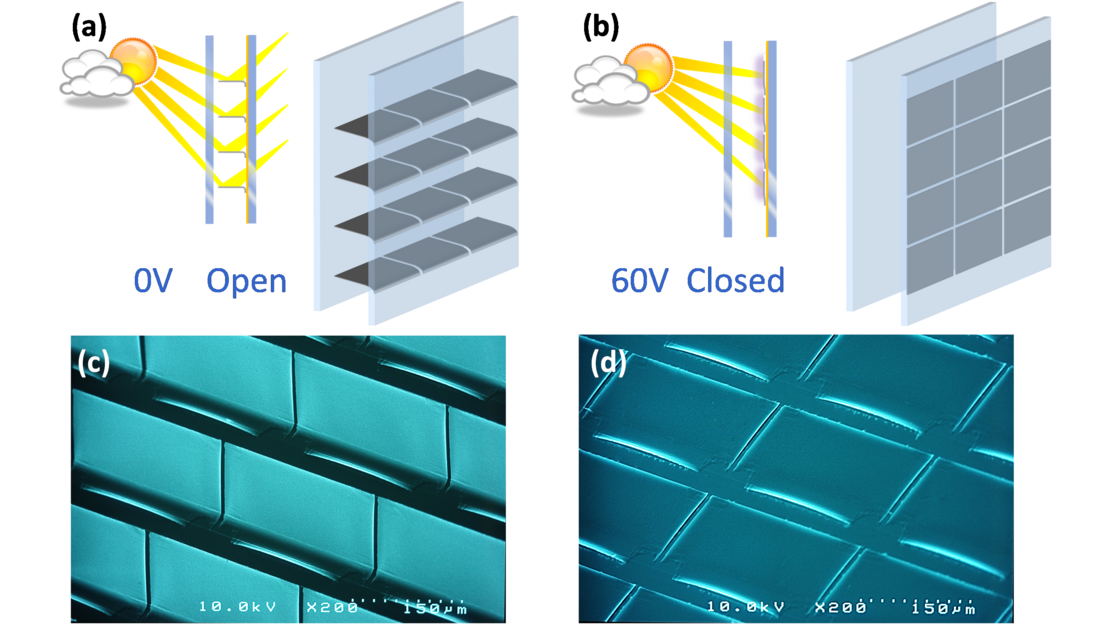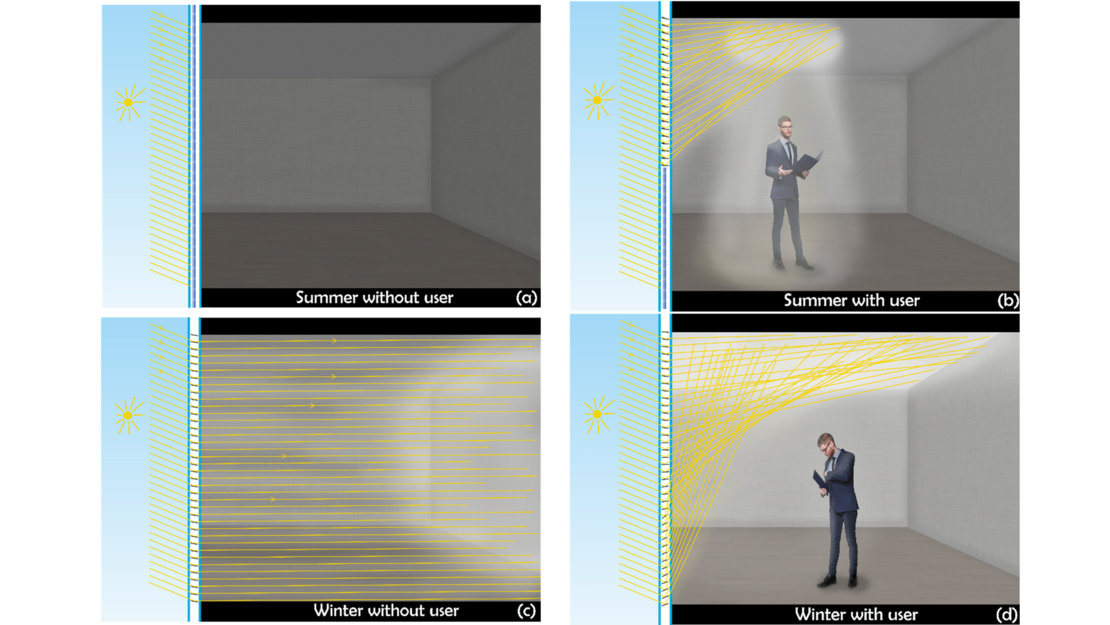Micro Mirror Arrays
Smart Glass MEMS Micromirror array for personalized light steering and heat management in buildings

A general improvement of the distribution of daylight inside rooms can be reached by using “active windows” based on micromirror technology. Active windows lead to a sharply reduced need of artificial light during the daytime and to a smooth illumination of living and office rooms with comfortable natural light.
Further concepts introduce micro mirror arrays as light concentrating devices for Photovoltaic applications. Actuable micromirrors shall track the sun position or brightness distribution of the sky.

Based on MOEMS technology, micromirror arrays are implemented and integrated inside insulated glazing in a noble gas environment as shown in Figure 1. The micromirrors are not visible to the bare eye due to their micro-size, hence, micromirrors don't obstruct vision through the glass. In contrast to competing products in the market, smart micromirror windows don't heat up because the mirrors reflect light rather than absorb it. On the internal pane surface of an insulation glazing, the mirrors are placed in arrays. Figure 2 illustrates how the voltage between the appropriate electrodes controls the orientation/position of mirrors to enable light guiding. The number, position, and movement of persons in the room are detected by motion sensors. The orientation of micromirror arrays can be controlled by artificial intelligence to guide only a sufficient amount of daylight which is suitable for lighting and temperature condition of the room.

Figure 2 shows four scenarios as follows:
- In summer without the presence of any person in the room, automatically the smart micromirrors close in a vertical position to reflect the whole solar radiation outside. This process keeps the room cool by reducing heat transfer into the room, and also saves the energy required for conditioning.
- In summer with the presence of a person in the room who is detected by sensors, the upper micromirrors open and reflect daylight onto a spot ceiling area above the person. The lower micromirrors stay closed to reflect the solar radiation outside to keep the room cool.
- In winter without the presence of any person in the room, automatically all the micromirrors open and collect whole solar radiation by reflecting daylight into the room. This process saves some of the required energy for heating.
- In winter with the presence of a person in the room who is detected by sensors, all the micromirrors guide the whole solar radiation to the ceiling in order to reduce glare. In this case, the ceiling performs as a radiation heater.
For the corresponding patent, Prof. Hillmer and Prof. Schmid were awarded with the "European Grand Prix for Innovation Awards" 2006.
